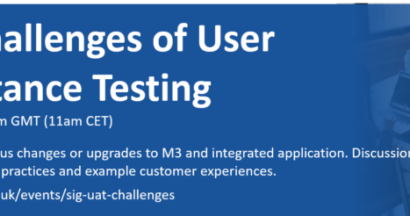Scope
Initially, you need to determine the scope of your UAT testing through three stages.
Determine timescales
Whilst implemented at the end of projects, starting early and engaging with all teams involved is advisable to ensure UAT is on the radar and considered in their planning. Often, departments consider the challenges and defects that will arise but do not realize that UAT identifies defects for fixing and overcoming.
When determining timescales, you also need to consider where resources will come from and the overall strategy. Part of the planning process will involve determining why the project is being carried out and the benefit the organisation hopes to gain from the change.
Once the benefit is realized, it must be effectively communicated to all UAT participants so they understand what they need to look for while testing to achieve success.

Things to consider
- What does the whole project look like?
- What are the business’s goals?
- What previous phases will the project go through?
- Who is involved in the whole project?
- The methodology being implemented, and where will UAT be used?
- What strategy and content were used in previous test phases, and what can be reused?
- The resources set aside for fixing issues and bugs
- The planned date to go live, and is it flexible to allow changes?
- What is the extent of the changes, and how will they impact the business?
Analyse the change
It’s necessary to determine the project’s scope to understand the changes the business hopes the software will bring and the resources and time needed to test it sufficiently.
When analyzing the change, if a business is developing unique software, you can communicate expectations from previous teams and phases, including development and quality assurance, to understand the software’s expectations.
If a cloud-based software or package is being implemented, obtain data from other users via forums and other channels to gauge the scale of the testing and resources needed.

Things to consider
- Significance of change
- The scale of the change
- Systems which will be impacted
- Business teams affected and the number of people who will be using the software
- The existing assets affected
- Input from the provider and reviews from clients
- Determine the impact of changes and risks
By conversing with those involved with the system, that being the system architects if developing software internally or with the software provider, determine the impact of changes on the business.
It is always important to remember that whilst the scale of a project and its impacts can be closely related, it is not for certain that small changes only result in small impacts but rather result in disproportionately large impacts on the business.
Therefore, assessing each change accordingly and determining its impact is important to efficiently plan User Acceptance Testing.
Things to consider
- Impact on current systems
- Impact on the overall business and how affected systems can impact further impact the business
- Impact on IT and other infrastructure
- The risk to the business from undetected errors
- Risk of timescales not being met
- The scope of the testing required
As with any testing process, not all phases need to be implemented within every project, but each should be considered to achieve the best possible outcome.
We are covering the whole approach to UAT in a step-by-step guide. You can read the next part, Strategy, or any of the other sections here:
Scope
Our UAT solution makes testing faster and easier for users and managers alike. Build, test, capture and manage your tests all in one place. Reduce effort by 60% in minutes.











